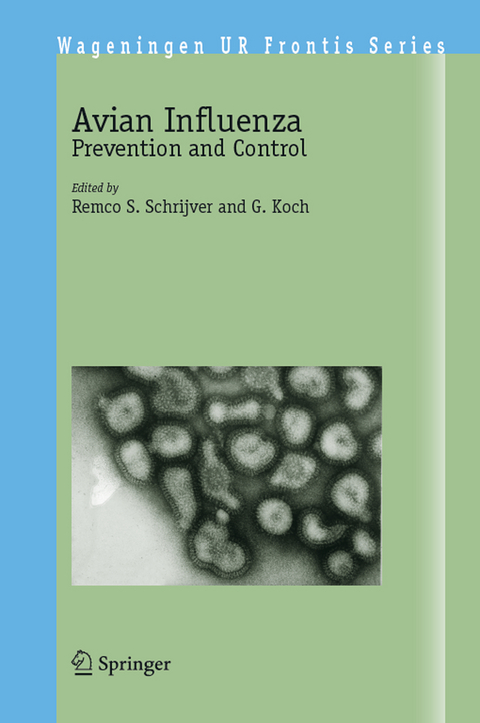
Avian Influenza
Springer-Verlag New York Inc.
978-1-4020-3439-8 (ISBN)
This has dramatically proven wrong during the last decade, with huge outbreaks in the USA, Europe, and Asia. The H5N1 strain that caused human deaths in Hong Kong appeared to be transmitted directly from poultry to man. This initiated sudden awareness that pigs were not a necessary intermediate in the transmission chain. During the AI outbreaks in Italy, mutation of low-pathogenicity viruses into high-pathogenicity viruses in poultry appeared another new threat, and further evidence that the poultry sector had a wolf in sheep’s clothing. It put pressure on development of diagnostic methods that could be used in large monitoring programmes.
In The Netherlands a human fatality, after increased reports of conjunctivitis during a H7N7 outbreak, signalled that different AI strains could be fatal to man. Also, the huge economic losses and difficulties in controlling the spread of the infection in densely populated poultry areas, problems with vaccination and lack of marker vaccines demonstrated that the current control policy must be improved. These events led to an international AI conference with experts from Asia, USA and Europe.
In this book you will find new views on the issues, expert opinions and the results of in-depth discussions among avian experts of around the world that do not want to give up against this dangerous virus.
and Spread of Avian Influenza.- Avian influenza viruses and influenza in humans.- Avian influenza viruses in Hong Kong: zoonotic considerations.- Live-bird markets in the Northeastern United States: a source of avian influenza in commercial poultry.- Influenza A virus surveillance in wild birds.- Outbreaks in Densely Populated Poultry Areas.- The control of avian influenza in areas at risk: the Italian experience 1997-2003.- An overview of the 2002 outbreak of low-pathogenic H7N2 avian influenza in Virginia, West Virginia and North Carolina.- Effectiveness of control measures on the transmission of avian influenza virus (H7N7) between flocks.- Vaccination.- Currently available tools and strategies for emergency vaccination in case of avian influenza.- Evaluation of vaccination to support control of H5N1 avian influenza in Hong Kong.- Vaccination of poultry against avian influenza: epidemiological rules of thumb and experimental quantification of the effectiveness of vaccination.- The development of avian influenza vaccines for emergency use.- Control Measures and Legislation.- Should there be a change in the definition of avian influenza for legislative control and trade purposes?.- Avian influenza control strategies in the United States of America.- Economics of Avian Influenza Control.- Minimizing the vulnerability of poultry production chains for avian influenza.- Economics of controlling avian influenza epidemics.
| Erscheint lt. Verlag | 9.6.2005 |
|---|---|
| Reihe/Serie | Wageningen UR Frontis Series ; 8 |
| Zusatzinfo | X, 154 p. |
| Verlagsort | New York, NY |
| Sprache | englisch |
| Maße | 155 x 235 mm |
| Themenwelt | Sachbuch/Ratgeber ► Natur / Technik ► Natur / Ökologie |
| Naturwissenschaften ► Biologie ► Ökologie / Naturschutz | |
| Naturwissenschaften ► Chemie ► Technische Chemie | |
| Naturwissenschaften ► Geowissenschaften | |
| Weitere Fachgebiete ► Land- / Forstwirtschaft / Fischerei | |
| ISBN-10 | 1-4020-3439-3 / 1402034393 |
| ISBN-13 | 978-1-4020-3439-8 / 9781402034398 |
| Zustand | Neuware |
| Haben Sie eine Frage zum Produkt? |
aus dem Bereich


